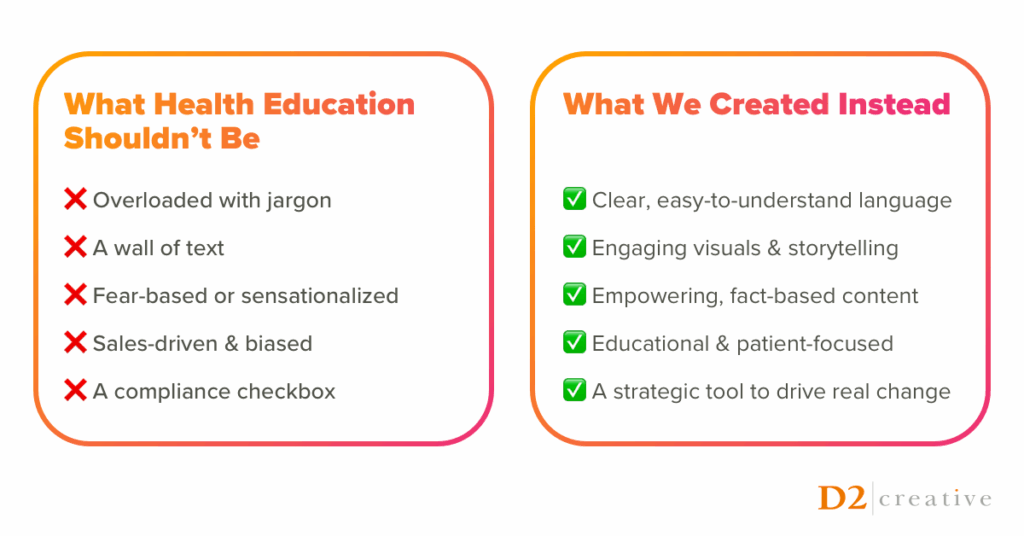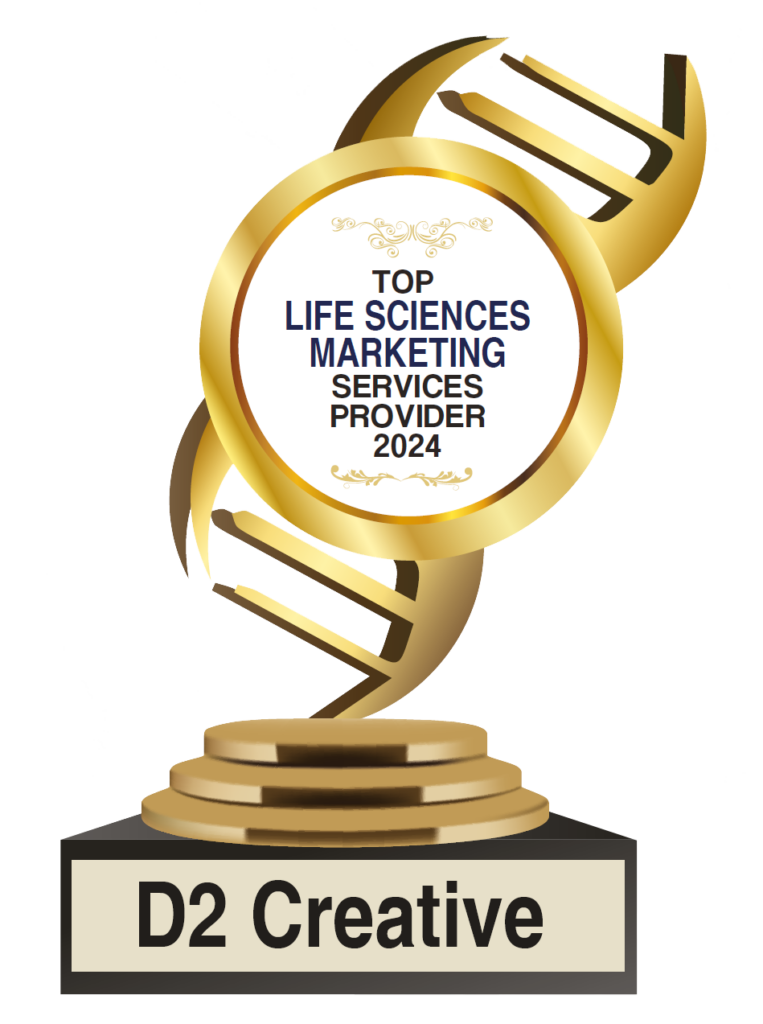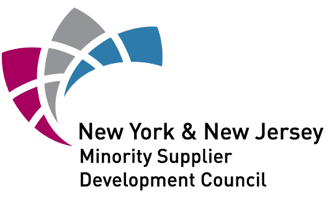How to Create Clear, Engaging Patient Education Content (That's Not Just Another PDF)
You’re on the front lines of patient advocacy, education, and engagement and believe in empowering patients with the knowledge they need to take control of their health, but you face a tough reality:
- Patients tune out because materials are dense, dry, or filled with jargon.
- Navigating compliance and legal restrictions limits creative freedom in patient education.
- Internal buy-in is hard to get, and you’re constantly fighting for budget and resources.
- Health education competes with marketing noise and online content, yet lacks the creative edge to stand out.
You know patient education can be better. But how do you make it happen without hitting roadblocks, or wasting budget on materials that don’t work?
Ineffective Patient Education Wastes Time and Money
Most patient educational content these days is a collection of text-heavy PDFs or static web pages that get little engagement. These solutions are inexpensive to produce, but often fail to drive real patient understanding, leading to more questions, confusion, and non-adherence. Investing in high-quality patient education is a strategic move that, ultimately, saves more time, resources, and can help drive better patient outcomes.

Taking a More Creative Approach
The most effective way to approach creating educational content for patients is by doing it in a way that blends creativity, science, and compliance. This way you’re creating materials that are:
- Designed for engagement – Use animation, engaging visuals, and compelling storytelling to simplify complex topics and hold attention.
- Educational, not promotional – Focus your content on empowering patients, not selling to them.
- Scientifically sound, not oversimplified – Translating complex concepts without dumbing them down helps user comprehension without feeling condescension.
- Compliant but not boring – It’s important to keep regulatory constraints in mind, but that shouldn’t stop you from using metaphors or a touch of humor to help with explanations.
- Backed by expertise – Don’t create content in a vacuum: collaborate with medical professionals, patient advocacy groups, and industry experts to ensure accuracy and relevance.
The Future of Patient Education Starts with You
With the right approach, you become the champion for meaningful, effective patient education.
Here’s a how the process of pivoting your patient education strategy:
Step 1: Define and Align. Start by clarifying your goals, your audience, and the topics that matter most. This sets the foundation for creating content that resonates.
Step 2: Create and Validate. From there, creative takes shape, bringing complex ideas to life in a way that’s clear, engaging, and medically sound. Establish ongoing input from patient advocates, which helps ensure accuracy and accessibility throughout.
Step 3: Deliver and Amplify. Finally, a smart distribution strategy helps your content reach the people who need it, where and when it matters most.
If you’re exploring ways to elevate your patient education efforts, we’re happy to take a look at what you’re working on and offer some ideas.




